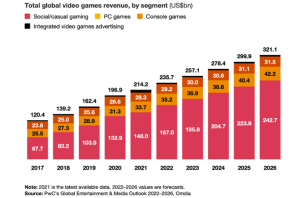
Over the past few decades, mobile gaming has emerged as a revolutionary form of entertainment. As technology has advanced, so too have the graphics in mobile games. Today, we will explore the incredible journey of mobile game graphics, from humble pixels to astonishing realism.
The Era of Pixelated Delights
In the early days of mobile gaming, the graphics were markedly different from what we know today. Games were built with simple, blocky pixels, limited color palettes, and minimal details. Titles like Snake and Tetris were incredibly popular, captivating players with their addictive simplicity.
While these pixelated games may seem basic by today’s standards, they laid the foundation for what was to come. Developers pushed the boundaries of what was possible, elevating the mobile gaming experience to new heights.
The Rise of 2D and Sprite-based Art
As technology advanced, 2D graphics entered the scene, bringing a significant visual upgrade to mobile games. Sprite-based art became the norm, allowing characters and objects to move smoothly across the screen. Though still limited in detail, these games introduced vibrant colors and improved visuals that were a treat for the eyes.
Classic titles like Super Mario Bros. and Street Fighter II showcased the potential of 2D graphics, captivating players with their engaging gameplay and appealing aesthetics. Mobile games started to resemble their console counterparts, albeit on a smaller screen.
The Arrival of 3D Graphics
The arrival of 3D graphics marked a turning point in the evolution of mobile gaming. With the introduction of smartphones, capable of handling more complex processing power, developers began to experiment with three-dimensional visuals.
Initially, 3D games faced limitations due to hardware constraints, resulting in simplified graphics and smaller worlds. However, as technology evolved, developers found innovative ways to optimize performance, allowing for more immersive and detailed gaming experiences on mobile devices.
The Age of Realism and Immersion
Fast forward to today, and mobile game graphics have reached remarkable heights. Armed with cutting-edge technologies like advanced shaders, lighting effects, and powerful GPUs, developers can create stunningly realistic visuals that rival those found on high-end gaming platforms.
Mobile games now boast highly detailed character models, textured environments, and stunning special effects. From photo-realistic landscapes to lifelike facial animations, the boundary between reality and virtual worlds continues to blur.
The Role of Augmented Reality (AR)
One of the most exciting developments in the world of mobile gaming graphics is the integration of augmented reality. AR technology overlays digital elements onto the real world, resulting in a truly immersive and interactive experience.
Games like Pokémon Go and Minecraft Earth have demonstrated the potential of AR on mobile devices, allowing players to interact with virtual characters and objects in their immediate surroundings. The integration of AR takes mobile game graphics to a whole new level, merging the digital and physical realms in astonishing ways.
The Future of Mobile Game Graphics
As technology continues to evolve at an astonishing pace, the future of mobile game graphics looks incredibly promising. With the advent of 5G networks, cloud gaming, and more powerful hardware, we can expect even more visually stunning and realistic experiences right at our fingertips.
Virtual reality (VR) and augmented reality (AR) are expected to play a significant role in shaping the future of mobile gaming. With improved VR headsets and AR glasses, players can expect to be fully immersed in worlds that were once only dreamt of.
Conclusion
The journey of mobile game graphics, from humble pixels to stunning realism, has been a remarkable one. As technology continues to advance, so too does the visual quality of mobile games, captivating players with immersive experiences that blur the line between reality and fantasy. Whether you’re a casual gamer or a devoted enthusiast, the future promises even more awe-inspiring graphics that will leave us in awe.


